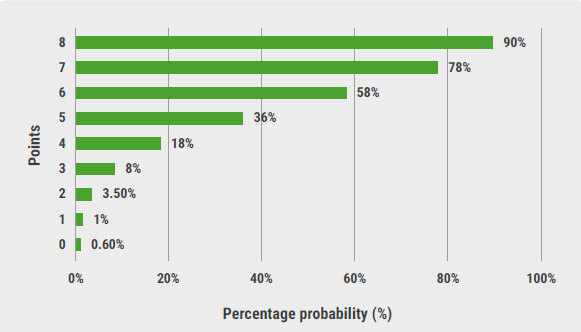"OAB has the same prevalence in men as in women," Dr. Cosimo De Nunzio of Sapienza University of Rome, Italy told Reuters Health by email. "However, men are rarely investigated in clinical trials evaluating new treatment modalities and are undertreated in clinical practice."
Although antimuscarinics are the first-line option, he said, patients taking the drugs frequently stopped treatment (53%) or switched to another antimuscarinic (22%).
"Switching and discontinuation rates vary according to different antimuscarinics," he noted. "These data suggest that many men discontinued treatment for unknown reasons. In some countries, as in Italy, OAB drugs are not reimbursed, and it is a limitation and could explain the low drug compliance observed in clinical practice."
"However," he noted, "in the UK, where beta-3 agonists such as mirabegron and antimuscarinics are reimbursed, drug compliance is still low."
Overall, he said, "mirabegron represents the most robust option to pharmacologically manage male OAB patients. All the other options in men should be considered investigational. Onabotulinum toxin A injections are the only minimally invasive option (third-line treatment) investigated in men."
As reported in European Urology, Dr. De Nunzio and colleagues searched the literature from 2000-October 2020 and found 24 relevant studies. A pooled analysis of five randomized clinical trials, including 1,187 patients, showed that mirabegron 50 mg was associated with a greater reduction in frequency versus placebo (-0.37).
A pooled analysis of three RCTs, including 1,317 men, also showed that adding mirabegron 50 mg to the alpha 1-blocker tamsulosin improved the mean number of daily micturitions (-0.27), urgency episodes (-0.50), total OAB symptom score (-0.66), and mean volume voided (+10.76 ml). Overall, mirabegron was well tolerated.
Other pharmacological options, such as phosphodiesterase-5 inhibitors, "should be considered investigational," the authors state. As Dr. De Nunzio noted, botulinum toxin-A seems to be effective as a third-line treatment in men. A higher rate of intermittent self-catheterization (5-42%) was observed in men compared with women. There is little data on nerve stimulation.
Two experts commented on the study findings and the relevance to the own practices in emails to Reuters Health.
Dr. Robert Evans, Director of Outpatient Urology at Wake Forest University Baptist Medical Center in Winston-Salem, said, "Because of the potential risk for dementia with prolonged use, most guidelines for OAB management recommend against anticholinergics for those over 65. That is the principal reason why I use mirabegron for (OAB) in men and women."
"In men," he noted, "it is usually given in conjunction with an alpha blocker such as tamsulosin. As long as one monitors the post-void residual to make sure that the patient does not develop urinary retention, this is considered a safe and reasonable option to help manage bothersome symptoms in male patients."
Although he has occasionally used botulinum toxin chemodenervation for "severe recalcitrant OAB," he agrees that data supporting this option are limited. "Patients who elect to try this must be willing to perform self-catheterization," he added, "as the risk for development of urinary retention is not insignificant."
Dr. Christopher Hartman, chief of urology at LIJ Forest Hills in Queens, New York, said, "numerous studies have demonstrated a benefit of beta 3 agonists, the most commonly studied being mirabegron, in reducing bothersome urinary symptoms." Furthermore, he noted, beta-3 agonists have fewer side effects than anticholinergics.
"While women have overwhelmingly been the focus of many of these studies, most urologists believe that the findings extrapolate well to men," he said. "More importantly, separate studies or those that have stratified patients by gender have also shown a benefit to these medications in men."
While he frequently uses mirabegron to treat OAB in men, he does not use botulinum toxin because of the paucity of research.
SOURCE: https://bit.ly/3pMPXiB and https://bit.ly/2YDZ0q2 European Urology, online January 2 and January 19, 2021.
By Marilynn Larkin
Posted on
Previous Article
« High tibial osteotomy may reduce need for total knee replacement Next Article
Transcatheter valve-repair system promising against tricuspid regurgitation »
« High tibial osteotomy may reduce need for total knee replacement Next Article
Transcatheter valve-repair system promising against tricuspid regurgitation »
Related Articles

January 27, 2021
Vibegron effective in long-term treatment of overactive bladder
© 2024 Medicom Medical Publishers. All rights reserved. Terms and Conditions | Privacy Policy
HEAD OFFICE
Laarderhoogtweg 25
1101 EB Amsterdam
The Netherlands
T: +31 85 4012 560
E: publishers@medicom-publishers.com

